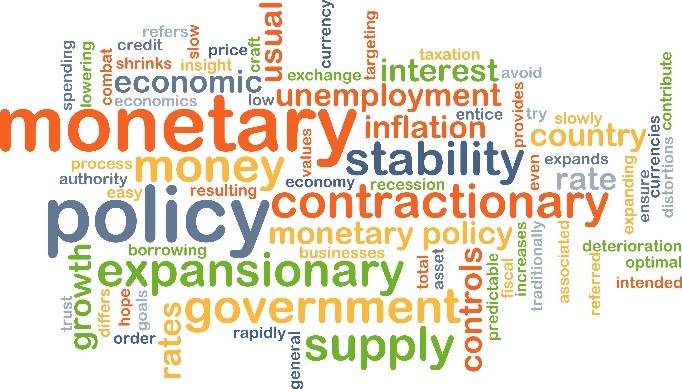What is Monetary and Fiscal Policy?
Monetary policy and fiscal policy are the most commonly used tools to influence a country’s economic activity. Different authorities usually implement these two separate policies, using distinct tools and instruments. On the one hand, in Fiji, the formulation of monetary policy is primarily the responsibility of the Reserve Bank of Fiji (RBF) with its key objectives of ensuring stable inflation and maintaining an adequate level of foreign reserves that are important for economic growth.

On the other hand, fiscal policy is implemented by the Government to achieve sustained economic growth, stimulate investment, keep Government debt at sustainable levels and ensure efficient use of its resources, amongst other things. The success of both the RBF and the Government in meeting these major and often interdependent objectives hinges on the reaction of aggregate demand, or more generally economic activity, to these policies. In order for both monetary and fiscal policy objectives to be achieved, the RBF and the Government work together and align or coordinate their policies in the best possible way.
The Policy Tools
In order to meet its objectives, the RBF influences interest rates or the total money supply in the economy by using either or a combination of reserve requirements placed on commercial banks and open market operations (for more details see earlier article on Monetary Policy in Fiji). Effectively, the RBF uses the overnight policy rate (OPR) to communicate its monetary policy stance, with a reduction in the OPR signalling an easing in monetary policy and vice versa. The OPR is reviewed monthly by the Monetary Policy Committee within the RBF and then by the RBF Board. It was last reduced from 1.5 percent to the current 0.5 percent in November 2011 to support investment and economic growth. Government’s fiscal policy tools include adjusting its spending levels, tax rates and types of tax, to influence economic activity. By adjusting its spending, the Government can influence its direct contribution to economic activity and therefore gross domestic output (GDP). Taxes are also a fiscal policy tool in that changes in tax rates affect the average consumer’s income, which in turn affects consumption, investment, savings and therefore economic activity.
How do Monetary and the Fiscal Policies work?
The RBF uses changes in its OPR in ensuring low inflation and adequate foreign reserves, to support economic growth. For example, if the economy is ‘overheating’ i.e. consumption and imports are growing too strongly, in order to help keep the economy on a sustainable path, the RBF can increase the OPR to help ‘cool’ the economy. This will signal an increase in the cost of borrowing (interest rates) which should slow down spending in the economy by discouraging unsustainably high consumption. For fiscal policy, if the Government observes that the economy is slowing down or there is not enough spending or business, it will inject more money in the economy by increasing its expenditure (spending). The Government could also help the economy grow by relaxing tax policies to stimulate business activity and confidence. This is known as expansionary fiscal policy because its primary purpose is to encourage economic activity. In contrast, contractionary fiscal policy is when Government cuts back on expenditure and/or increases tax rates.
Why the need for Monetary & Fiscal Policy to be Coordinated
While monetary and fiscal policies are implemented by different agencies in Fiji, these policies are dependent on each other as they share the broad and common goals of achieving economic growth and macroeconomic stability. For instance, if the Government decides to implement an expansionary fiscal policy to grow the economy, monetary policy needs to be accommodative to ensure that interest rates are low to allow easy access to finance for consumption and investment purposes.

If monetary policy were to remain tight – meaning that interest rates were high, the desired growth effect to the economy from the fiscal policy side will be constrained by the high cost of borrowing or interest rates. Nonetheless, monetary policy will deliberately be set to support fiscal policy as long as there are no threats to its core objective of ensuring low inflation and having adequate foreign reserves. That is, if expansionary fiscal policy puts pressure on inflation and foreign reserves, the RBF, as an independent institution, will need to tighten monetary policy in order to safeguard its twin monetary policy objectives and ultimately ensure macroeconomic stability. When this happens, the Government will find it costly to borrow funds to finance its spending, prompting it to cut back on its expenditure or raise taxes to increase its revenue. This simple illustration demonstrates the importance of coordinating monetary and fiscal policy in order to achieve their common goals of supporting and protecting sustainable economic growth.
Monetary and Fiscal Policy Coordination in Fiji
In Fiji, monetary and fiscal policy coordination occurs through inter-agency committees and regular meetings between Government and RBF officials, given their common objectives. For example, the Macroeconomic Committee is an inter-agency group responsible for forecasting GDP, Trade and Balance of Payments, which assists with monetary and fiscal policy formulation, implementation and monitoring. Since the committee comprises RBF and Government officials, deriving macroeconomic forecasts and assessing their impact on monetary and fiscal policy are important outcomes. Similarly, the RBF is also part of other committees such as the Debt and Cash Flow Policy Committee which meets to discuss Government’s financing needs and to ensure public debt is managed appropriately. Notably, the Permanent Secretary for the Ministry of Economy is an ex-officio member of the RBF Board which ensures sharing of information and understanding of why certain decisions on policy are being taken, thus further assisting fiscal and monetary coordination. In order to create awareness about monetary policy, the RBF produces monetary policy booklets, quarterly reviews, monthly economic reviews, annual reports and makes presentations at various Government and private sector forums, which encourage transparency and allows sharing of information for monetary policy formulation. For its part, the Government also conducts stakeholder consultations and announces its fiscal policy plans during its annual National Budget.

Conclusion
Coordinated monetary and fiscal policy results in the achievement of mutual goals and therefore makes for successful policy making and implementation. Effectively, policies have been harmonised by the institutional arrangements of both the fiscal and monetary authorities in the country. In other words, membership of common committees and regular interactions have enabled the RBF and the Ministry of Economy to be in regular contact, share information on the analysis of current events and the formulation and monitoring of policy implementation.

